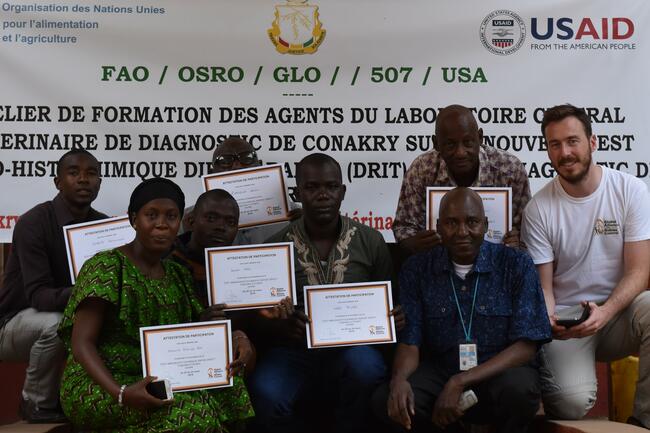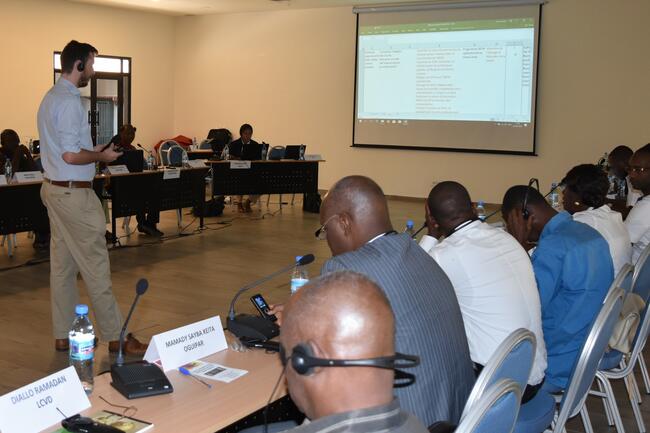Diagnosing the problem and planning for the future: Bolstering rabies control in Guinea

In the western reaches of the African continent lies Guinea, a country that made headlines globally during the Ebola outbreak that ended in early 2016. However, recent more exciting and positive developments in public health have emerged from the s capital city of Conakry, where rabies control efforts have been buoyed through intensive trainings and workshops.
Through a collaboration between the UN FAO, USAID and GARC, an intensive rabies diagnostic training course was hosted at the Central Veterinary Laboratory in Conakry, Guinea from 22-24 March 2018 by the Guinea FAO office. Six laboratory personnel were trained in the use of the DRIT (Direct Rapid Immunohistochemical Test), an easy, cost-effective assay for the diagnosis of suspect rabies samples. The rabies diagnostic training was an important foundational step in improving rabies surveillance in the country, providing a strong platform for Guineans to advocate for support and raising awareness about rabies.
Later in March, a national workshop was held to demonstrate the various tools developed to assist countries in the creation and implementation of an effective and strategic national rabies elimination strategy. The workshop was organised and hosted by a collaboration between the UN FAO, USAID, GARC and the US CDC.
The Stepwise Approach towards Rabies Elimination (SARE) was undertaken in an intensive workshop that included a multitude of stakeholders and partners from various ministries (including Ministry of Health, Ministry of Animal Husbandry and the Ministry of Environmental Affairs), international organisations (WHO, OIE, FAO, CDC, GARC, USAID, Institut Pasteur) and the private sector, among others. This workshop truly encompassed the One Health spirit and resulted in a comprehensive self-assessment of the current situation in the country.
Following the SARE analysis, the Global Dog Rabies Elimination Pathway (GDREP) tool was demonstrated by the US CDC as a tool to facilitate budgeting for a rabies control strategy, including the human resources required to achieve adequate animal vaccination coverage. With this powerful information at hand, a stronger and more accurate estimate of the needs of the country could be assessed and advocated for at the national level to drive any future rabies control campaigns.
Although both the SARE and the GDREP provide details of what is required to develop and implement an effective national rabies control strategy, a concrete means as to how these activities can be achieved was still lacking. A newly developed tool--the Practical Workplan towards Achieving Rabies Elimination (PWARE)—was developed by GARC to convert information from the SARE into actionable items, highlighting pending activities and then developing a concrete and detailed workplan on exactly how those pending activities can be accomplished. After many hours of fruitful discussions between the various partners, Guinea developed an actionable workplan and further prioritised several activities to be achieved in the coming months.
The workshop closed with positive remarks from the various international organisations and the encouragement of Guinea to implement and undertake those activities that were prioritised by the PWARE tool to drive their efforts of rabies elimination closer to the goal of being free from dog-mediated human rabies by the year 2030.
Submitted by Terence Scott, GARC and member of the Pan-African Rabies Control Network (PARACON) Steering Committee

